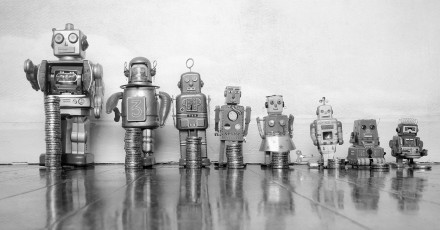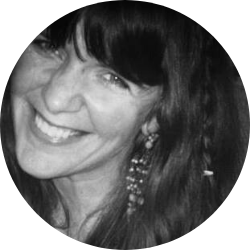Resources & Events > Blog

Why companies should add class to their diversity policy
BY PAULA LONERGAN, ORGANISATIONAL DEVELOPMENT CONSULTANT SPECIALISING IN WORKPLACE WELLBEING AND RESILIENCE | 12 NOV 2019
Irish workplaces are more culturally diverse than ever before. Ireland is currently the European home to over one thousand international companies and with the number of international students at Irish universities having more than doubled since 2010, workplaces are set to become increasingly culturally diverse.
Up to recently it was the Health and IT sectors leading the way and now we are seeing cultural diversity in every sector and at every level across all industries. However, diversity is not just about cultural background. It can also include skill set, experience, age, gender and capacity. These levels of difference have always existed in workplaces but are gaining further consideration by falling under the range of factors creating diversity.
A recent study from University of Virginia Darden School of Business recommends that we go further than the traditional measures of diversity to include class and background. This study demonstrates how some people who transition from one socio-economic class to another during their careers bring a particular set of skills along with them and are of a particular value to the workplace. As summarised in Forbes, they acquire new skills and tools which enable them to adapt to their new environments similar to how being placed in a foreign country forces us to reassess our norms and values.
The ‘Like Me Bias’
This kind of transition from one social class to another through one’s profession could be held up as some kind of ‘amercian dream’ or ‘cinderella story’. Unfortunately, the same research shows it can be a draining and extremely isolating experience for the individual and one which is being made less and less likely by an apparent re-newed and tighter hold on class and socio-economic mobility.
New recruitment approaches have brought about an almost tick-box assessment of candidates and the old elitist ‘Like Me Bias’ results in a heightened level of socio-economic exclusion which impacts on accessibility to jobs, promotions and progression. Selecting those who have a similar background, outlook and social standing will of course make it all very cosy at the top but as research shows; this is a-kin to an act of in-company self-harm in the modern workplace. For this reason, companies are realising the necessity of writing diversity policies and adopting approaches to recruitment and promotion that include rather than exclude. Hence, the fact of diversity is not enough; inclusion is the key.
Creating a sense of belonging
Of course, a Diversity Policy means you can be invited to the party. Inclusion however is being asked to dance. Some take the analogy even further by adding that belonging is really dancing like no one is watching. So how is it done? How do we take it from the pages of the written policy towards an environment where everyone is safe to be themselves and bring value to their teams and workplaces? What exactly is stopping us? Lori Nishiura Makenzie, a leading D & I researcher with Stanford University suggests it is all down to bias – the unconscious kind.
According to Makenzie, bias is in fact in all of us and is always ‘on’. It is an almost instinctive trait we use to assess friend or foe, safety or danger and other such fundamental survival skills. These age-old reflexes don’t always help us in the complexities of today’s working world however and this same skill is unfortunately what leads to judgement, prejudice and discrimination. And yet some still cling on to the baby-boomer workplace models where the directors all seem to look the same and share everything from gender, education, golf-club memberships and taste in cars. This model has not only been shown to be old hat but according to a study by Sabrina Clark of McKinsey & Co., businesses are now being called out for their lack of diversity and inclusion at leadership level.
By becoming more aware of our own bias; learning the steps of taking the unconscious bias into the conscious, we can at least pause the internal prompts bias causes and which affects our decision-making. With fuller consciousness we can acquire conscientiousness and take a little more time and responsibility around important decisions regarding who is invited and who gets to dance – freestyle – at the party.
Creating this sense of belonging where the very atmosphere in the office makes people feel it’s ok to be themselves brings about greater engagement, loyalty and creativity. This 2018 McKinsey & Co. report shows these gains also translate directly into profitability with statistics as high as 33% in favour of inclusive-led organisations.
The Power of Vulnerability
As far as leadership is concerned, bias is definitely the enemy. Whereas ruthlessness and single-mindedness were once a must, inspiring leaders today no longer need the shark-like approach in order to set an example. In this new world of inclusion and belonging, humility is the new bravado while empathy is the new dog-eat-dog. The pressure is off to never be seen to make mistakes or god forbid, be seen as vulnerable and weak. In her ridiculously successful Ted Talk titled “The power of vulnerability” (44 and a half million views and counting), Brene Browne emphasises the power of vulnerability and the positive impacts on leadership behaviour when leaders start caring about what others think of it.
With all good things that really really matter, inclusion and belonging cannot be simply switched on. This takes courage, effort and time, especially in well established organisations where roles and systems are slow to change. The key is in the leadership and an inclusive leader will make a huge contribution but it has to be in the minds of each and everyone in and organisation so once they have reached this place of safety and creativity, it is jealously guarded by all and at all levels. The new gate-keepers of diversity and inclusion are each and every one of us and we all stand to benefit from learning the steps of the dance.
The new Irish Times Training “Diversity and Inclusion at Work” programme aims to support participants in acquiring the skills to appreciate and value diversity to transform their workplaces into creative and dynamic hubs. The programme can be tailored to an organisation’s policies in this area and delivered on-site to help tackle your team’s unique goals and challenges. To download a programme brochure, contact us on (01) 472 7101 for more information.

About the author
Paula Lonergan is an organisational development consultant specialising in workplace wellbeing and resilience with an enthusiasm for creating high performance cultures through authentic team work.
As a translator and interpreter with French, Paula works for the Department of Justice, The Refugee Council and many large, international companies in both Ireland and France. She is also a qualified mediator registered with the Mediation Institute of Ireland.
